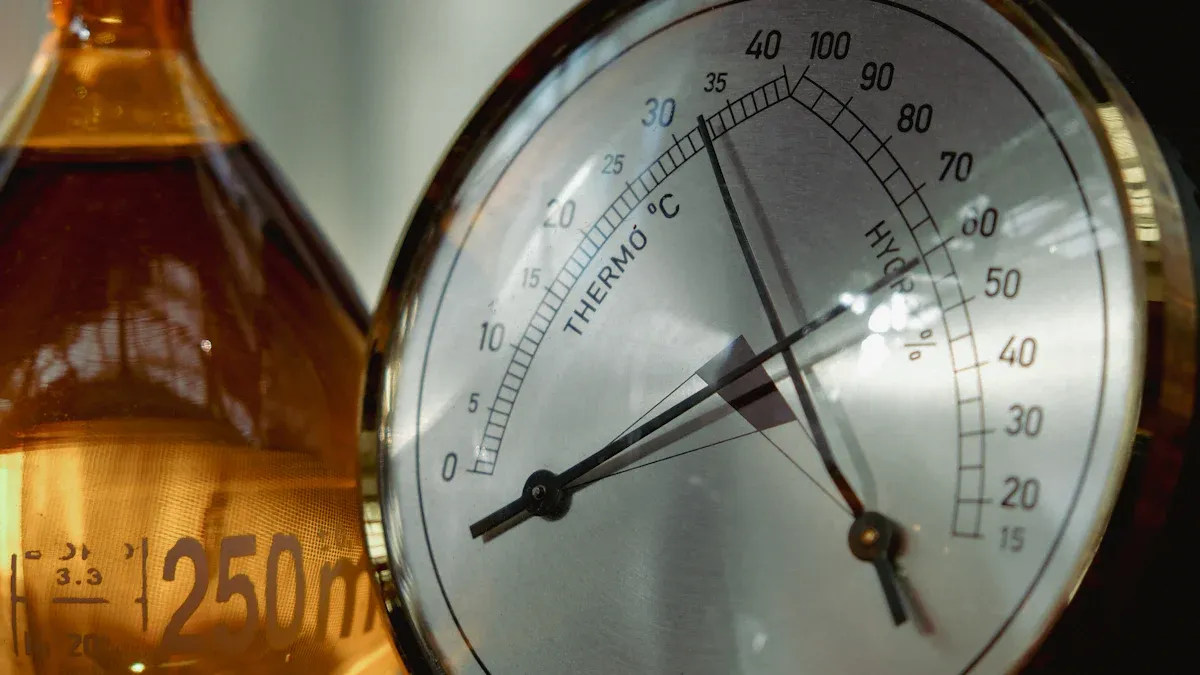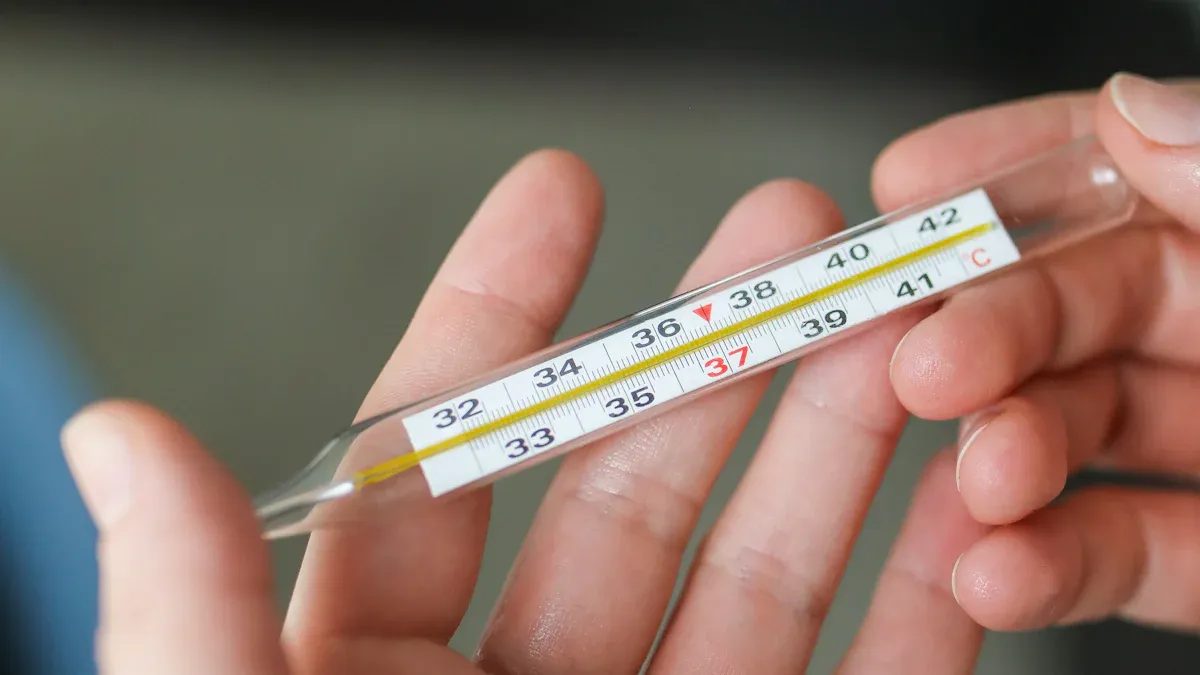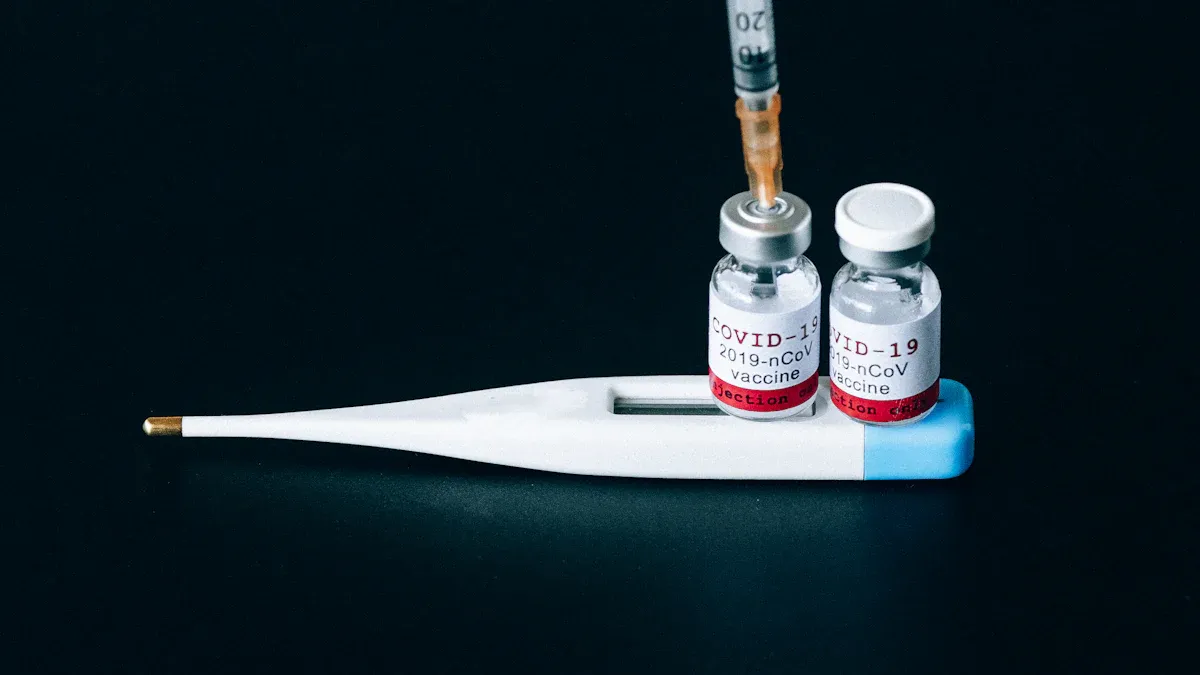
Ever thought about shaking a lab thermometer before using it? The answer is no—you don’t need to shake a lab thermometer. These tools are made to show exact temperatures without extra work. Unlike oral thermometers, lab thermometers don’t need shaking to reset the liquid inside. Shaking it might break the thermometer or ruin the reading. Also, you could crack the glass or spill dangerous liquids. It’s safer to handle it gently and carefully.
Why You Don’t Need to Shake a Lab Thermometer
How lab thermometers are designed for accuracy
Lab thermometers are made to give exact readings without shaking. Their design lets the liquid inside reset naturally after use. It’s amazing how these tools work so well. Let me explain it simply:
Calibration Check: These thermometers are tested with an ice point check. This ensures they stay accurate, so shaking isn’t needed.
Long-term Stability: Mercury-in-glass thermometers can stay correct for many years. Yes, years! No shaking is ever required.
Manufacturing Techniques: The bulb is very important. It’s made to react to temperature changes, keeping readings reliable.
Here’s a table to show these features clearly:
Design Feature | Explanation |
|---|---|
Calibration Check | Glass thermometers are tested with one ice point check for accuracy. |
Long-term Stability | Mercury-in-glass thermometers stay accurate for many years if cared for. |
Manufacturing Techniques | The bulb reacts to temperature changes, ensuring reliable readings. |
These features make lab thermometers very trustworthy. You don’t need to shake them at all.
Differences between lab thermometers and oral thermometers
Lab thermometers and oral thermometers are made for different uses. People often mix them up, but they are not the same. Here’s how they differ:
Purpose: Oral thermometers check body temperature. Lab thermometers measure liquids or gases.
Reset Mechanism: Oral thermometers need shaking to reset. Lab thermometers reset on their own.
Durability: Lab thermometers handle extreme temperatures and are made of strong glass. Oral thermometers are for quick, everyday use.
If you’re used to shaking an oral thermometer, don’t do it with a lab thermometer. It’s not needed and could cause damage.
Why shaking can cause damage or inaccuracies
Shaking a lab thermometer can cause big problems. Some people break their thermometers because they think shaking is needed. Here’s why it’s a bad idea:
Risk of Breakage: Lab thermometers are glass and can crack or break if shaken hard.
Inaccurate Readings: Shaking can mess up the liquid column, giving wrong temperatures.
Safety Concerns: If the thermometer breaks, mercury or alcohol can spill. These are dangerous for you and the environment.
Instead of shaking, handle your thermometer gently. If the liquid doesn’t reset, it might need replacing. It’s safer to avoid shaking altogether.
Risks of Shaking a Lab Thermometer

Potential for breaking the thermometer
Shaking a lab thermometer can cause it to break. These thermometers are made of glass, which is fragile. Glass can crack or shatter if you shake it too hard. Older thermometers are even more likely to break because they may already have tiny cracks.
Some people accidentally break their thermometers by shaking them too much. It’s not worth the trouble. A broken thermometer means you’ll need a new one. It can also create a messy cleanup. If the thermometer has mercury, the situation becomes more dangerous.
Instead of shaking, handle your thermometer with care. If the liquid doesn’t reset, check if it needs replacing.
How shaking can lead to inaccurate readings
Shaking a lab thermometer can ruin its accuracy. The liquid inside might not settle correctly when shaken. This can cause bubbles or splits in the liquid column, leading to wrong readings. Imagine doing an experiment and finding out later the thermometer gave a false reading. That would be frustrating!
Lab thermometers are made to give exact results. They don’t need shaking like oral thermometers. Shaking doesn’t help—it can make things worse. For correct readings, let the thermometer work on its own.
Environmental and safety concerns with broken thermometers
A broken thermometer can cause safety and environmental problems. If it contains mercury, the risks are even greater. Mercury is toxic and can harm people and the environment. It spreads easily and can pollute air, water, and soil. Cleaning up mercury is hard. You need to isolate the area, wear safety gear, and carefully collect the droplets. Even then, some mercury might stay behind.
Cleaning up mercury spills can also cost a lot of money. Many labs now use safer, non-mercury thermometers. If your thermometer breaks, it’s not just a hassle—it’s dangerous. Don’t shake it to avoid accidents.
Tip: If your thermometer breaks, clean it up safely. Don’t touch the liquid with bare hands. Open windows to let fresh air in.
How to Handle a Lab Thermometer Safely

Proper techniques for using a lab thermometer
Using a lab thermometer correctly gives accurate results. Following simple steps helps keep experiments safe and on track. Here’s what you should do:
🧪 Follow GLP Rules: Good Laboratory Practice (GLP) keeps work safe and precise. Always follow these rules.
🌡️ Check Temperatures Often: Watch the thermometer to avoid mistakes or contamination.
✅ Use NIST-Approved Tools: Thermometers meeting NIST standards give trustworthy readings.
Here’s a table to explain these tips:
Best Practice | What It Means |
|---|---|
GLP Rules | Helps monitor temperatures safely and accurately. |
Temperature Checks | Stops contamination and keeps samples safe. |
NIST Approval | Ensures reliable and safe temperature readings. |
By doing these things, you’ll avoid errors like shaking a thermometer. Shaking isn’t needed and might break it.
Tips for storing and maintaining your thermometer
Taking care of your thermometer makes it last longer. I always store mine properly and check it often. Here are some easy tips:
🛠️ Calibrate Often: Test the thermometer’s accuracy regularly. Write down the results.
📋 Keep Notes: Record calibration details and store them safely.
🔍 Check for Cracks: Look for damage before and after using it.
🗓️ Yearly Checks: Get it certified every year to keep it working well.
These steps will help your thermometer stay accurate and last for years.
What to do if your thermometer is damaged
A broken thermometer can be harmful, so act quickly. If it breaks, follow these steps:
Action | What to Do |
|---|---|
Treat as Hazardous Waste | Handle broken thermometers carefully to avoid harm. |
Follow Mercury Cleanup Rules | Use proper methods to safely clean up mercury or other materials. |
Tip: Don’t touch spilled liquid with bare hands. Open windows for fresh air and wear gloves during cleanup.
By handling damage the right way, you’ll stay safe and protect the environment.
Alternatives to Shaking a Lab Thermometer
How the liquid column resets naturally
The liquid column in a lab thermometer resets by itself. Unlike oral thermometers, you don’t need to shake it. The liquid moves back as the thermometer cools to room temperature. This happens because the liquid shrinks when the temperature drops, returning to the bulb.
This works best if the thermometer is kept in a steady place. Don’t expose it to very hot or cold conditions. Extreme temperatures can slow the reset process. If the liquid doesn’t reset after a while, the thermometer might be damaged.
Tip: Be patient! Store the thermometer in a cool, dry spot. The liquid will settle back naturally.
When to consider replacing your thermometer
Replace your lab thermometer if it’s damaged or inaccurate. Here are some signs to watch for:
It shows a difference of more than 1°C from a reference thermometer.
The glass has cracks or leaks.
It has been dropped or exposed to strong shocks.
The sensor drifts or calibration becomes incorrect over time.
Test your thermometer often to ensure it works properly. If it’s not accurate, get a new one. A reliable thermometer keeps your experiments accurate and safe.
Other tools or methods for accurate temperature readings
There are other ways to measure temperature if your thermometer fails. Digital thermometers and infrared sensors are good options. They are simple to use and don’t rely on liquid columns.
Wearable devices with double sensors can also give precise readings. These are mostly used in medical settings to track temperature and other vital signs. While not common in labs yet, they could be useful in the future.
If you need a backup, try a digital thermometer. It’s a dependable tool to use alongside traditional lab thermometers.
You don’t need to shake a lab thermometer—it’s not required and can be harmful. These thermometers reset on their own, so shaking might break them or give wrong readings. Taking care of your thermometer is important for safety and accuracy.
Here’s how to use it safely:
🛠️ Be gentle: Don’t shake or drop the thermometer.
🧪 Check often: Look for cracks and calibrate regularly.
🌍 Dispose properly: Throw away broken thermometers the right way.
Research shows that safety training and risk checks in labs lower accidents and improve handling. For instance:
Study | Key Findings |
|---|---|
Cote et al., 2016 | Stresses using data for better safety rules. |
Yarahmadi et al., 2016 | Points out missing safety info for lab risks. |
Pedrosa and Cardoso, 2011 | Recommends linking safety with quality systems. |
By following these steps, you’ll keep your thermometer, experiments, and environment safe. Let’s make labs safer and more effective!
FAQ
What should I do if the liquid column in my thermometer doesn’t reset?
Be patient—it usually fixes itself. Put the thermometer in a cool, steady spot and wait. If it doesn’t reset after some time, it could be broken. You might need to get a new one.
Can I use a lab thermometer to measure body temperature?
No, lab thermometers aren’t made for that. They are used to measure liquids, gases, or surfaces in experiments. For checking body temperature, use a digital or oral thermometer instead.
How do I clean a lab thermometer safely?
Use a soft cloth with gentle soap. Don’t use rough materials that might scratch the glass. If it has mercury, follow special safety rules for cleaning hazardous materials.
What’s the best way to store a lab thermometer?
Keep it in a safe case. Store it in a cool, dry place, away from sunlight or extreme heat. This helps protect it and keeps it accurate.
Can shaking a thermometer ever fix it?
No, shaking can make things worse. It might crack the glass or mess up the liquid inside. Always handle it carefully and avoid shaking it.




